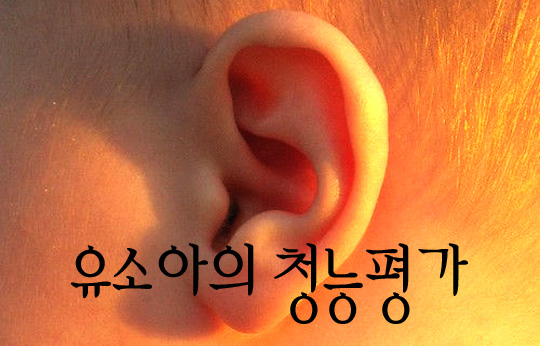
아래 내용은 신생아(newborn infants) 선별검사로 유명한 PEDIATRIX Medical Group 에서 청각검사와 관련 있는 내용을 발췌했습니다.
high risk가 있는 신생아에게 필요한 검사는 수십 가지가 넘습니다만, 그 중에서 청각선별검사에 대한 자료를 원문으로 실었습니다.
아래 내용은 ABR에 관한 내용입니다.
Hearing screening
DescriptionHearing screening in newborn infants has become a routine test recommended for all infants before discharge from the hospital. Several screening tests are available and all are non-invasive. These include BAER (Brainstem Auditory Evoked Response), ALGO (which also measures BAER), or ABR (Auditory Brainstem Response).
Purpose
Hearing is an important part of a child's development. The earlier a hearing problem can be identified, the earlier it can be addressed to allow optimal development of speech patterns.
Procedure
Hearing screening is done as follows:
- Depending on which test is being performed, hearing screening is performed by an audiologist, a technician, or the infant's nurse
- Earphones are placed on the infant and a series of noises at certain levels are used to test hearing in each ear
- Responses to the noises are measured by measuring brain wave activity. This is done by sticking several probes to the surface of the infant's head, which are hooked to the testing machine
Risks
There are no risks associated with hearing screening.
|
|
|
When anyone hears a sound, electrical pulses travel through the brainstem and into the brain. These electrical pulses move at a specific speed and energy level if a person’s auditory system is healthy. With this equipment, we are able to measure the speed and intensity of these pulses to determine if there is potential hearing loss. Our trained hearing screener places earmuffs over the newborn’s ears that provide soft clicking noises. Small, attached electrodes then measure the speed and intensity of the pulses traveling to the brain. The hearing screen does not cause the newborn any discomfort. In fact, because this procedure is so sensitive, the newborn must be asleep or in a relaxed state to ensure accuracy. This screen does not confirm hearing loss, it only points out the potential for hearing loss and indicates the need for diagnostic testing. |
'청각학 이야기 > 신생아청각선별검사' 카테고리의 다른 글
| [기현어머님께] 생후 1개월 유소아 난청아동의 신생아 청각선별검사(AABR)와 청능재활 (0) | 2011.03.22 |
|---|---|
| 신생아 난청(청각장애)을 조기에 진단하는 손쉬운 방법 (0) | 2010.02.13 |
| 신생아 난청 선별검사에 사용되는 특수검사 두 가지 (0) | 2008.10.27 |
| [아동청각학] 신생아(선천성) 난청 고위험군에 대한 한국 의료계와 미국 의료계의 입장 비교 (0) | 2008.10.27 |
| [학술대회 후기] 신생아의 청각선별검사 프로그램에 대한 부모 만족도 조사 연구 (1) | 2008.10.16 |

